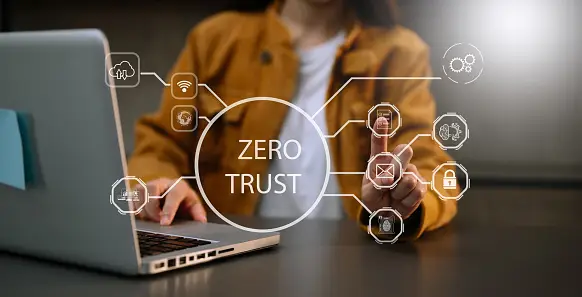Zero Trust security is rapidly transforming the cybersecurity landscape. It moves away from traditional perimeter-based security models. In this approach, every connection attempt is continuously verified before granting resource access.
56% of global organizations say adopting Zero Trust is a “Top” or “High” priority.
This approach offers significant security advantages. But the transition process presents several potential pitfalls. Running into these can harm a company’s cybersecurity efforts.
Below, we’ll explore these common roadblocks. We'll also offer guidance on navigating a successful Zero Trust security adoption journey.

Remembering the Basics: What is Zero Trust Security?
Here are the fundamental principles of Zero Trust:
- Least Privilege: Users only get access to the specific resources they need to do their jobs, no more.
- Continuous Verification: Authentication doesn't happen once. It's an ongoing process. Users and devices are constantly re-evaluated for access rights.
- Micro-Segmentation: IT divides the network into smaller segments. This limits the damage if a breach occurs.segments. This limits the damage if a breach occurs.segments. This limits the damage if a breach occurs.segments. This limits the damage if a breach occurs.segments. This limits the damage if a breach occurs.segments. This limits the damage if a breach occurs.segments. This limits the damage if a breach occurs.segments. This limits the damage if a breach occurs.segments. This limits the damage if a breach occurs.

Remember, Zero Trust is a Journey
Building a robust Zero Trust environment takes time and effort. Here's how to stay on track:
- Set Realistic Goals: Don't expect overnight success. Define achievable milestones and celebrate progress along the way.
- Embrace Continuous Monitoring: Security threats are constantly evolving. Continuously watch your Zero Trust system and adjust your strategies as needed.
- Invest in Employee Training: Empower your employees as active participants in your Zero Trust journey. Regular security awareness training is vital.

The Rewards of a Secure Future
Avoid these common mistakes and adopt a strategic approach. This will enable your business to leverage the big advantages of Zero Trust security. Here's what you can expect:
- Enhanced Data Protection: Zero Trust minimizes the damage from a potential breach. It does this by limiting access to sensitive data.
- Improved User Experience: Streamlined access controls create a smoother experience for authorized users.
- Increased Compliance: Zero Trust aligns with many industry regulations and compliance standards.
Reach out for a cybersecurity evaluation today.
